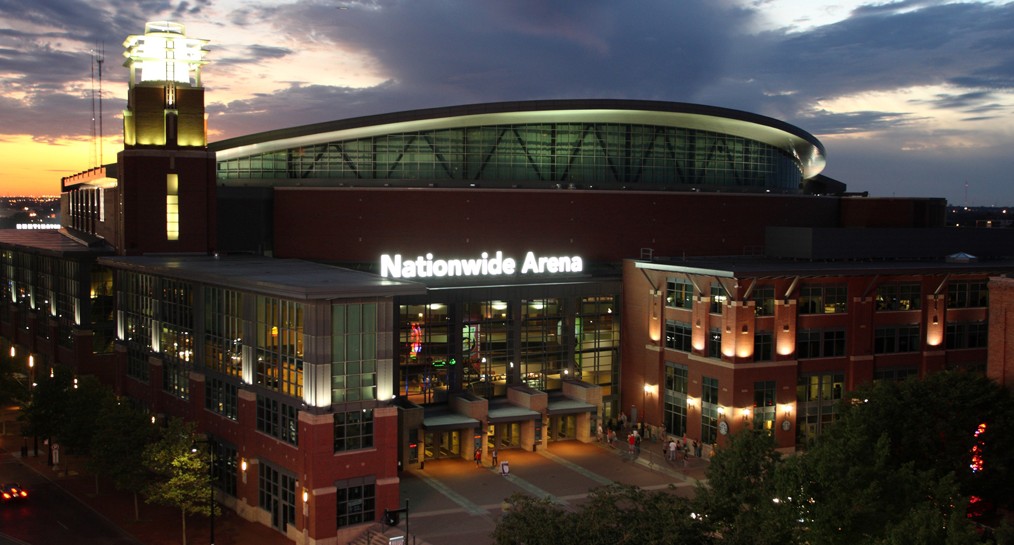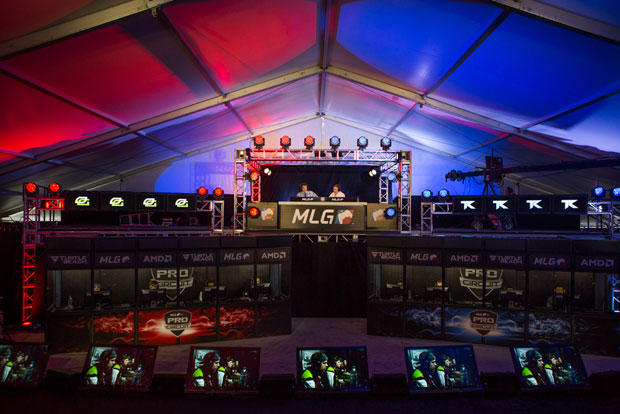MLG has graduated to Nationwide Arena (home of the NHL’s Columbus Blue Jackets) with this weekend’s Counter-Strike: Global Offensive Major Championship in Columbus. Mike Sepso, senior vice president at Activision Blizzard and former president and co-founder of MLG, sees a future where NFL stadiums will host eSports events in the U.S.
With $1 million up for grabs at this weekend’s first-ever North American CS:GO Major event, Sepso talks about the goals of Activision Blizzard as it attempts to appease hardcore fans and introduce new fans to eSports.
 How is MLG’s first stadium event different from anything in the past?
How is MLG’s first stadium event different from anything in the past?
We’re going to go outside of the screen, whether it’s a Jumbotron at the stadium or the screen at home. The next-generation eSports experience will be more interactive, and more than just a video screen.
At Nationwide Arena, you’ll be able to see the LED screens reacting to what’s happening in real-time through some new technology we’ve developed. Our product strategy is related not only to the live fan experience, but also the over-the-top streaming platform. You’ll see more of it there later this year. We’re testing across both this weekend to provide an additional layer of data to the viewers.
What would you say is the significance to having the Major Tournament take place in the Nationwide Arena?
It’s a big step for Counter-Strike in North America. Traditionally, the game has been dominated by Europe, but we’re seeing four NA teams qualify for the first time, and the excitement and passion of the fans here is second to none.
How will this test impact the future MLG eSports experience?
These enhanced features will just be a test so people can watch in multiple ways. We’re in the experimentation phase and want to see what different cohorts of our audience are interested in. We don’t want to do anything other than increase the value of the current audience for the core fans. MLG has always been good at communicating with the core community, and we think some of these new features will give them something new to interact with.

In what ways have MLG tournaments grown and evolved over the past few years?
We’re always looking for ways to improve the live event experience and the broadcast. Obviously, the biggest difference for this event is that it’s our first in a traditional sports arena, but we’re also using that space to integrate the staging more closely with what you see in-game and we’re testing out an enhanced viewer experience at MLG.tv/csmajor that pulls real-time situational data to offer insights into the top players that directly relate to what’s happening in the moment.
How are you opening up eSports to the more mainstream audience?
For the more casual fan, it provides a greater depth of knowledge of what they’re watching, especially through the non-technical parts of this conversation that celebrate the players and personalities.
One issue with eSports versus any traditional sports is that while you watch the game, you don’t see the people playing. We need to put celebrating these players a bit more into focus, and bring them into the forefront through their personalities and stories. This is all very early, but this new set of capabilities is just the beginning.
How are you learning from traditional sports?
We’re not reinventing sports here. We’ll use successful models from traditional sports, including up-close and personal storylines and pieces like ESPN does so well. We’ve been doing that. One of the interesting storylines in Columbus is that it’s the first time North American CS:GO teams are competing up to the level of European teams.
Will you give more control to the home viewers of what they’re seeing?
In the future, we’ll test a feature to switch from player to player in a match. We’re going to take a programmatic approach to see which changes gets the most traction with the fan base and which ones drive the storylines. This first time out is all about getting feedback from viewers at home.
What do you attribute to the meteoric rise of CS:GO in eSports?
CS:GO is specifically built for eSports. All of the in-game productization and third-party marketplace around it are a big part of its success. Valve is smart about how they’ve worked with the fan base and leagues to establish a firm base for some of the biggest and best eSports operators to come in and build something great. A lot of the live and broadcast enhancements we’re able to do quickly because the game was built for us to access data in real-time. That allows the MLG product team to build interesting experiences around that. The game is well-suited to tap into the current ecosystem around eSports.
What do you think it is about CS:GO, a four-year-old game, that keeps viewers hooked?
It’s been consistent in terms of gameplay, and Valve has done a great job within the community and game to keep engagement levels high.
MLG has graduated to an NHL arena. Is an NFL stadium far behind for the U.S. market when you look at the ESL attracting 113,000 people to the Intel Extreme Masters World Championship in Katowice, Poland earlier this month?
We’ll take a more unified look at the numbers at Katowice; sometimes people take a little license with how they report attendance numbers. But a football stadium isn’t that far away. The next obvious step for us is an NFL stadium.
A big part of this Nationwide Arena event was to see who’s attending. We wanted to see if fans were flying in from all over the world or if it’s more like the NHL or NBA and drawing in the local market audience. For Columbus, we received a very high percentage of ticket purchases from the larger Columbus market–way more than we had anticipated. Maybe the U.S. is catching up to Asia in terms of having a mainstream enough fan base–even in Columbus–so we can sell out a 9,000 seat arena. This opens up the opportunity to do more arena events, not just once or twice a year.
How many viewers and attendees are expected to watch the Major Tournament live?
We have sold out the arena, so we expect over 9,000 fans each day.
How has the transition from MLG to Activision Blizzard been for you?
When I joined Activision Blizzard, Steve Bornstein and I sketched out a grand strategy on how we could use all the resources of the company—not just the IP, but the global reach, balance sheet and deep understanding of brand management. With my background in the eSports world and Steve’s in the traditional sports world, we’ve outlined a strong strategy for market leadership that will help drive eSports forward by creating more mature, sustainable, business models for all aspects of the industry.
Activision Blizzard as a company (and now with King, we have the global mobile reach that business has) can help lead the industry, and be a much more open platform for the rest of the industry to organize something that’s more sustainable and easier to understand. If we can do that successfully, the entire industry will benefit, as well as fans and players.
Our sustainable investment hypothesis for how this works is to invest more back into the fan experience. That’s why we have these enhanced viewing tests. We’re less than a quarter into this acquisition happening, and we’re moving quickly.
This interview was conducted in collaboration between John Gaudiosi and Steven Wong. Mike Sepso will be a keynote speaker at the [a]list summit on April 20th in Seattle. alistsummit.com

